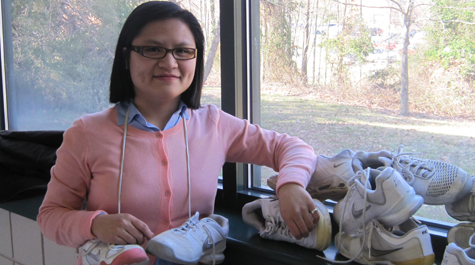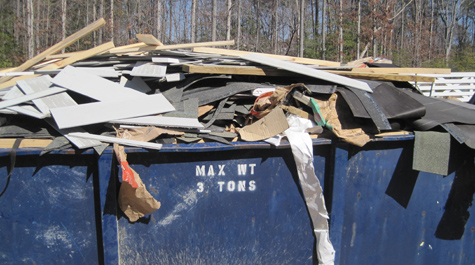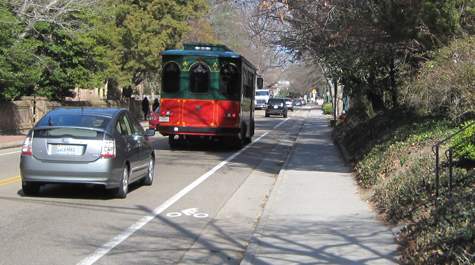W&M improves standings among Princeton Review’s top green colleges
Just two days prior to Earth Day, the College of William & Mary has improved its standing as one of the most environmentally-responsible colleges in the nation, according to “The Princeton Review’s Guide to 311 Green Colleges: 2011 Edition.”
William & Mary received a “Green Rating” numerical score (scaled from 60 – 99) of 93, up three points from the previous year. Of 703 institutions that The Princeton Review gave “Green Ratings” to, the 311 schools in the Guide received scores of 80 or above. The Princeton Review chose the 311 schools based on a survey conducted in 2010 when the Princeton Review published “Green Rating” scores for 703 schools in its annual college guidebooks and website.
"We are very pleased that the W&M sustainability programs have been recognized in The Princeton Review Guide to Green Colleges for the second year running,” said Dennis Taylor, co-chair of the College's Committee on Sustainability. “This achievement results from the dedicated effort of a great many students, faculty and staff who volunteer their time and support to growing a sustainable College. We're very proud of all of them."
Created by The Princeton Review in partnership with the U.S. Green Building Council (USGBC), "The Princeton Review's Guide to 311 Green Colleges” is the only free, comprehensive guidebook profiling institutions of higher education that demonstrate a notable commitment to sustainability in their academic offerings, campus infrastructure, activities and career preparation. Schools are judged on the institution’s commitment to building certification using USGBC's LEED green building certification program; environmental literacy programs; formal sustainability committees; use of renewable energy resources; recycling and conservation programs, and much more. A complete guide can be found online at http://www.princetonreview.com/greenguide and www.usgbc.org/campus.
According to William & Mary’s guide entry, “green highlights” include the coordination of local and sustainable food initiatives by the College’s dining services; efforts by the Committee on Sustainability involving a Sustainability Fellow who regularly blogs about the College’s progress; projects made possible by the student “green fee” and the requirement of new campus buildings to achieve LEED Silver certification or better. Miller Hall, home to the new Business School, received Gold certification.
In a press release, Robert Franek, senior vice president and publisher for The Princeton review said, “College-bound students are increasingly interested in sustainability issues.” From more than 8,000 college applicants who participated in a 2011 survey, “69 percent said having information about a school’s commitment to the environment would influence their decisions to apply to or attend the school,” he reported.
Since 2008, William & Mary has been committed to a campus-wide initiative improving sustainability on campus. Students elected to charge themselves with a “green fee” that would go toward facility improvements, student grants for research on environmental issues and a “Green Endowment.”
The Committee on Sustainability (COS), formed in fall 2008 with the approval of President Taylor Reveley, develops, plans and recommends strategies for integrating sustainability into the life of the College. Today, the committee is one of the largest on campus and includes faculty, staff and nearly 50 students serving on the 10 working groups. This spring, eight Eco-Ambassadors are working on various recycling projects including the collection of old tennis balls, athletic shoes, personal computers and cell phones.
In 2010, William & Mary launched another green effort, which asks every person on campus to “Do One Thing” in support of sustainability. The campaign makes William & Mary the country's first "DOT" university.
 Skip to main content
Skip to main content




